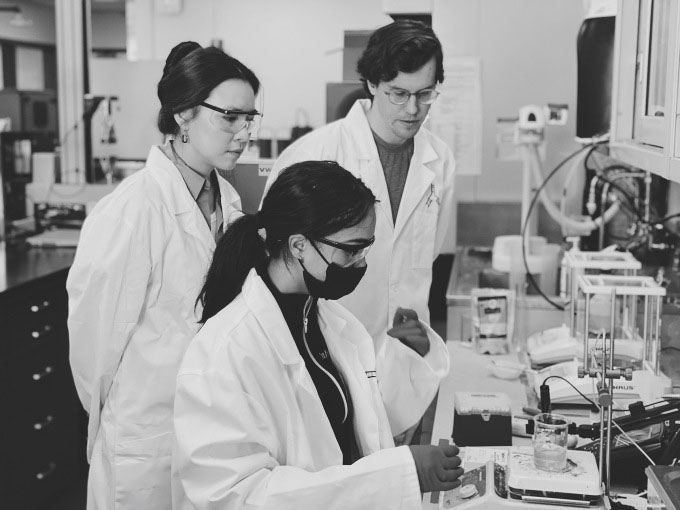Young Vietnamese Inventor Uyên Trần Develops Method to Reuse Shrimp Shell Waste and Coffee Grounds as Leather Alternative.
Chloe Uyên Trần (29 years old) is planning to return to her hometown with investors and suppliers to promote a synthetic leather fabric she has named TômTex.
Born in Da Nang, Uyên has lived and worked in the United States for 10 years. She holds a master’s degree in fashion design from Parsons The New School of Design, the largest art and design university in New York City.
The idea for TômTex material was sparked by familiar elements that reminded Uyên of her hometown. “I grew up wearing second-hand clothes, discarded items from Western countries,” she recalls. The pollution caused by landfills filled with polyester and synthetic fabric waste, along with her experiences working with both real and synthetic leather, troubled her. “This type of material takes 500 years to decompose when discarded, severely impacting the environment,” she stated.

Chloe Uyên Trần, founder of TômTex. (Photo: NVCC)
Driven by a desire to find an environmentally friendly material, she decided to pursue a master’s degree in biomaterials at Parsons School of Design. After a year of experimentation, the first version of TômTex material was born.
The Vietnamese designer in New York revealed that TômTex biomaterial is derived from two main sources: chitin, extracted from seafood shells, and mushroom fibers. First, they extract chitosan, then combine it with a biodegradable adhesive and mix in natural dyes like coffee. This mixture is poured into molds and dried at room temperature for about 2-3 days before it can be used. This process does not require heat, thus saving energy and reducing carbon emissions.
The resulting compound can be customized to resemble leather, rubber, or plastic by adjusting the ratios and production methods.

Leather product made from seafood shells and coffee grounds. (Photo: NVCC)
The unique aspect of TômTex is that it is made from 100% biodegradable materials without undergoing the tanning process. This tanning process, used to treat animal skins, makes materials more durable and less biodegradable, but it harms the environment due to the use of toxic chemicals. The material can be used to make clothing, footwear, bags, accessories, furniture, tools, and sports equipment. At the end of its life cycle, products can be recycled or naturally decompose in the environment.
Uyên stated that the discovery of this material stems not only from a desire for success but also from the social responsibility of her business. “I want to build a company that values humanity and prioritizes environmental protection,” she said.
The fabric she created has received awards in the global fashion industry, including the LVMH Innovation Award (which supports innovative initiatives and ideas) and the CFDA K11 Innovation Award for creative design thinking in sustainable fashion systems from the Council of Fashion Designers of America (CFDA)…

TômTex research team in the laboratory. (Photo: NVCC)
TômTex is currently in the research and development phase, having secured $1.7 million in investment with a company valuation of $10 million. Uyên mentioned that the past year has been challenging for her and many others. “I have struggled quite a bit in establishing the company, but I feel fortunate to still receive support and interest,” she told the press.
Believing herself to be optimistic, creative, and persistent, Uyên expressed her desire to contribute to the development of the national industry in the future.

















































